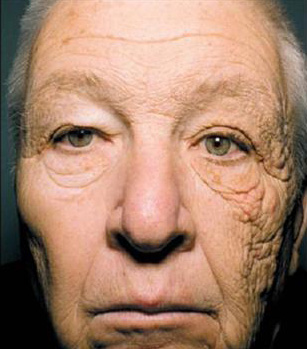Recent research shows why sun exposure causes so much damage to skin

Every week patients ask, “What is the big deal about sun exposure?” And I’ll grant you – when it is summer and the weather is gorgeous, it is inconvenient to reapply sunscreen or go back inside the house to fetch your hat. Yet, new research has shown us exactly why sun damage is so awful and prematurely ages us from the inside out – and it all has to do with our DNA.
First, you have to know that DNA gets damaged over time. From the moment you are formed, the clock starts ticking. Many mechanisms exist in your body to repair this DNA damage, but depending on your genetics and environmental factors, that clock can tick faster and more damage can be done than your body can keep up with, and that is the principal reason that we appear to age at different rates.
Enter UV radiation. These wavelengths of light penetrate your exposed skin and degrade your DNA, accelerating your clock. As a matter of fact, sun exposure causes damage to your DNA in a very specific way. According to the recent research published in the July 8 edition of Nature Medicine, sun damage causes alterations of genetic material in your cells. Reactions like a sunburn (and even just tanning the skin) are your body’s way of removing this altered genetic material in the skin cells. The healthy cells right next to the damaged cells are trying to get rid of the damage by causing an inflammatory response!
Skin cancer is another manifestation of damaged cell DNA, which is why sun exposure (or any UV exposure, actually) increases your risk of getting it. Lasers target sun-damaged skin by using different wavelengths of light to get rid of the sun damaged cells. This is oversimplifying things, obviously, because different lasers target different manifestations of the damage (i.e. brown spots on the surface of your skin are different from wrinkles caused by the destruction of collagen and subsequent loss of elasticity). However, the basic principle is the same; sun exposure speeds up your aging clock by causing all sorts of cell and DNA damage – laser treatments turn back the clock a little bit at a time by helping to eliminate and repair the damage.
So, aside from avoiding the cost of paying a doctor to remove the lines, wrinkles, red splotches and brown spots with a laser later in life, keeping out of the sun is a good idea if you are interested in maintaining a youthful appearance.
References:
http://www.nature.com/nm/journal/vaop/ncurrent/full/nm.2861.html
http://consumer.healthday.com/Article.asp?AID=666464
http://www.nlm.nih.gov/medlineplus/ency/article/003227.htm
Request An Appointment Today!
Appointment Request
Please complete the information below and a representative will contact you to answer your questions and schedule a comprehensive consultation.
